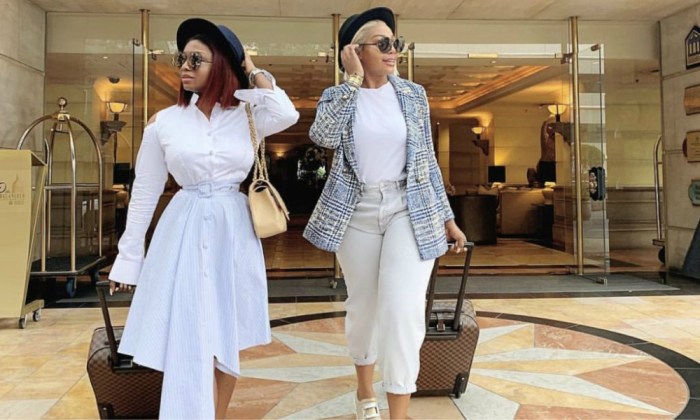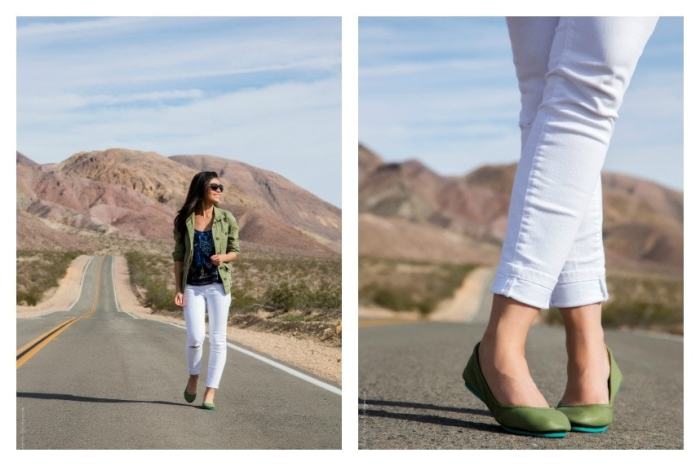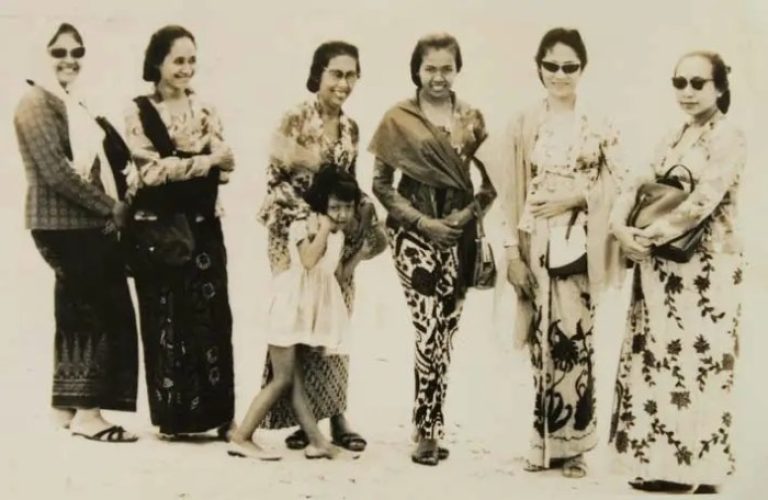Time Travel Dress to Impress: Step into a world where fashion history comes alive! This guide explores the fascinating intersection of clothing, history, and personal style, offering a practical and engaging approach to crafting historically accurate and impressively stylish outfits. We’ll journey through different eras, examining key fashion trends, social contexts, and the psychology behind clothing choices. Get ready to learn how to design captivating outfits inspired by the past, perfect for a time travel party or simply expressing your unique sense of style.
From the elegant silhouettes of the Victorian era to the flapper dresses of the Roaring Twenties and the mod styles of the 1960s, we’ll delve into the details that make each era unique. We’ll cover everything from selecting the right fabrics and accessories to mastering period-appropriate hairstyles and makeup. We’ll also explore how modern designers reinterpret historical styles, incorporating contemporary materials and techniques.
Prepare to be inspired and empowered to create your own unforgettable time-traveling looks!
Historical Fashion Through Time

Fashion, a reflection of societal values, technological capabilities, and cultural shifts, has undergone a dramatic transformation throughout history. From the practical garments of ancient civilizations to the elaborate creations of modern designers, clothing has served not only as protection but also as a powerful symbol of status, identity, and artistic expression. This exploration will delve into key periods and illustrate the fascinating interplay between fashion and the broader historical context.
A Timeline of Fashion Evolution
This timeline highlights pivotal moments in fashion history, focusing on significant stylistic changes and the silhouettes that defined each era. Understanding these shifts provides a framework for appreciating the evolution of clothing design and its connection to societal developments.
| Era | Period (Approximate) | Key Styles & Silhouettes |
|---|---|---|
| Ancient Egypt | 3000-30 BCE | Simple, flowing linen garments; draped dresses; conical skirts; use of jewelry and elaborate headwear. The climate and materials heavily influenced the style, prioritizing comfort and breathability. |
| Medieval Period | 5th-15th Centuries | Long, flowing gowns and robes for women; tunics and hose for men; pointed shoes; elaborate headdresses and veils. Religious influence and rigid social hierarchies dictated the style and the use of specific fabrics. |
| Renaissance | 14th-16th Centuries | Emphasis on rich fabrics, elaborate embroidery, and opulent embellishments; structured bodices and full skirts for women; doublet and hose for men; the rise of tailored clothing. The rediscovery of classical art and a flourishing economy fueled the elaborate style. |
| 18th Century | 1700-1799 | Rococo style: ornate embellishments, pastel colors, and flowing fabrics; wide skirts and stays for women; powdered wigs and elaborate coats for men. The aristocratic lifestyle and the court of Versailles heavily influenced the style. |
| Victorian Era | 1837-1901 | Crinoline and bustle silhouettes for women; tightly fitted bodices; long, full skirts; for men, frock coats, top hats, and waistcoats. The era’s emphasis on modesty and social status determined the style. |
| 1920s | 1920-1929 | The flapper look: dropped waistlines, shorter hemlines, loose-fitting garments; bobbed hair; emphasis on youth and liberation. Post-war societal changes and a rejection of Victorian ideals shaped this style. |
| 1950s | 1950-1959 | Full skirts, cinched waists, and structured silhouettes for women; a return to femininity and traditional values. Post-war prosperity and a focus on family life influenced the styles. |
| 1960s | 1960-1969 | Mini skirts, A-line dresses, bold prints, and a focus on youth culture and rebellion. Social and political upheaval impacted fashion, expressing a sense of freedom and change. |
Societal Norms and Technological Advancements’ Impact on Fashion, Time travel dress to impress
Throughout history, societal norms and technological advancements have profoundly influenced fashion choices. Changes in social structures, economic conditions, and available technology directly impacted the style, materials, and production methods of clothing.For example, the invention of the sewing machine in the 19th century revolutionized garment production, making clothing more accessible and affordable. The rise of mass production led to the standardization of sizes and styles, impacting the overall fashion landscape.
Similarly, the introduction of new fabrics like synthetic fibers in the 20th century opened up new possibilities for design and functionality. Social movements, such as the women’s suffrage movement, also had a profound impact, leading to changes in women’s clothing that reflected their increasing independence and social roles.
Comparison of Three Distinct Historical Periods
This section compares and contrasts the styles of three distinct historical periods: the Ancient Egyptian, Victorian, and 1920s eras, highlighting their unique characteristics.The Ancient Egyptian style emphasized simple, flowing garments made of linen, reflecting the climate and readily available materials. Silhouettes were primarily draped, with a focus on comfort and functionality. In contrast, the Victorian era featured elaborate and restrictive clothing, reflecting the rigid social hierarchy and emphasis on modesty.
Women’s clothing involved complex undergarments like crinolines and bustles, creating a dramatic silhouette. Finally, the 1920s saw a radical shift towards shorter hemlines, dropped waistlines, and a more relaxed silhouette, representing a break from Victorian traditions and a celebration of youth and modernity. The differences highlight how fashion reflects societal values, technological capabilities, and the prevailing cultural climate.
Time Travel Dress Code
Planning a time travel party? Getting the historical details right is key to a truly immersive experience. This section will explore three distinct thematic approaches to time travel attire, offering detailed outfit suggestions and insights into the social context of each era.
Victorian Era Elegance (1837-1901)
For a Victorian-themed ensemble, imagine a long, flowing gown in a rich, dark fabric like velvet or brocade. The silhouette should be emphasized with a cinched waist and a full skirt, possibly with a bustle or crinolines for added volume. The neckline could be high and modest, perhaps adorned with lace or delicate embroidery. Accessories are crucial: long gloves, a delicate necklace, and possibly a cameo brooch would be perfect.
The hairstyle should be elaborate, perhaps a braided updo or a chignon, with decorative combs or hairpins. Think dark, elegant colors like deep emerald green, burgundy, or navy blue.Social context: Victorian society was highly stratified, with strict social etiquette. Women were expected to dress modestly and elegantly, reflecting their social standing. This outfit embodies that refined, reserved elegance.
Roaring Twenties Glamour (1920-1929)
The Roaring Twenties call for flapper-style glamour. Picture a knee-length, beaded flapper dress, ideally in a shimmering fabric like silk or satin. The dress should have a dropped waist and a loose, flowing silhouette, allowing for freedom of movement—essential for the era’s energetic dances. Accessories should be bold and dazzling: long pearl necklaces, art deco-style earrings, and perhaps a feather boa.
The hairstyle should be short, bobbed, and styled with waves or finger waves, possibly adorned with a headband or hairpins. Think shimmering metallics, jewel tones, and bold patterns.Social context: The 1920s were a time of significant social change, with women gaining more freedom and independence. The flapper style reflected this shift, with its looser silhouettes and more playful attitude compared to previous decades.
Swinging Sixties Chic (1960-1969)
For a 1960s look, consider a shift dress or A-line dress in a vibrant, playful print or solid color. Think bold geometric patterns, bright colors like orange, yellow, or pink, or classic monochrome. The fabric could be cotton, linen, or a synthetic material popular at the time. Accessories should be simple yet stylish: cat-eye sunglasses, a headscarf, and perhaps chunky jewelry.
The hairstyle should be a classic bob, a beehive, or long, straight hair, often styled with a bouffant.Social context: The 1960s were a time of counterculture and social upheaval. The fashion reflected this, with styles that were youthful, rebellious, and often brightly colored. This era saw a move away from the restrictive styles of earlier decades.
Outfit Comparison
| Era | Silhouette | Fabric | Accessories |
|---|---|---|---|
| Victorian | Cinched waist, full skirt | Velvet, brocade | Long gloves, cameo brooch, delicate necklace |
| Roaring Twenties | Dropped waist, loose and flowing | Silk, satin, beaded fabrics | Long pearl necklace, art deco earrings, feather boa |
| Swinging Sixties | Shift or A-line | Cotton, linen, synthetics | Cat-eye sunglasses, headscarf, chunky jewelry |
Accessories and Details: Time Travel Dress To Impress
Choosing the right accessories is crucial for completing your time-traveling ensemble. These small details can elevate your look from simply costumed to historically accurate and stylish. The correct accessories not only add authenticity but also tell a story, revealing the social status, profession, and even the personal style of your chosen era.
Historically Significant Accessories
Accessories played a vital role in conveying social status and personal style throughout history. Here are five examples that significantly enhance a time-travel outfit:
- Victorian Era Pocket Watch: More than just a time-telling device, the pocket watch symbolized wealth and sophistication in the Victorian era. Its intricate design, often featuring precious metals and engravings, added a touch of elegance to men’s attire. A woman might carry a smaller chatelaine, a decorative chain with attached trinkets.
- Edwardian Era Long Gloves: Long gloves, reaching to the elbow or even higher, were a staple accessory for women in the Edwardian era. They signified elegance and social standing, and different lengths and materials suggested different levels of formality. The color and fabric also spoke volumes about the wearer’s style.
- 1920s Flapper Headband: The beaded headbands of the roaring twenties were a symbol of the flapper era’s rebellious spirit and liberated style. These headbands, often adorned with feathers, jewels, or intricate designs, were a key element in creating the iconic flapper look, complementing the short bob hairstyles and loose dresses.
- 1950s Cat-Eye Sunglasses: Cat-eye sunglasses became a fashion icon in the 1950s, epitomizing Hollywood glamour and sophistication. Their distinctive shape flattered many face shapes, and they were a stylish accessory for women of all ages and social classes. They also provided practical sun protection.
- 1970s Disco Necklace: Long, layered necklaces, often made of bold materials like plastic, wood, or metal, were quintessential accessories of the disco era. These necklaces added sparkle and movement to outfits, reflecting the era’s vibrant and energetic atmosphere. The more flamboyant, the better.
Historical Hairstyles
Hairstyles are a powerful visual indicator of time period. The following table illustrates key hairstyles from different eras:
| Era | Hairstyle | Description | Image Description (Note: No actual image provided) |
|---|---|---|---|
| 1770s (Rococo) | Pouf | A large, elaborate updo featuring height and volume, often with curls and decorative elements. Think Marie Antoinette. | A tall, powdered hairstyle with many curls and possibly ribbons or decorative combs. |
| 1890s (Victorian) | Gibson Girl | A sleek, elegant updo with a soft wave at the forehead and a low bun or chignon at the nape of the neck. | A smooth, polished updo with a slightly waved fringe and a neat bun at the back, often with a decorative comb or barrette. |
| 1920s (Roaring Twenties) | Bob | A short, straight, or wavy hairstyle that was a radical departure from the longer styles of previous eras. | A short, chin-length hairstyle that is either straight and sleek or styled with soft waves. Often worn with a headband. |
| 1950s | Victory Rolls | Two rolled curls framing the face, often paired with a ponytail or updo. Associated with post-war glamour. | Two distinct rolls of hair on either side of the forehead, swept back and styled into a ponytail or updo. |
| 1960s (Mod) | The Beehive | A large, voluminous updo created by backcombing and teasing the hair to create height and fullness. | A very tall, rounded updo created by backcombing and setting the hair with hairspray. Often sleek and smooth on the top. |
Makeup and Hair: Creating Authentic Historical Looks
Makeup and hair are integral components of achieving an authentic historical look. The styles and techniques used varied dramatically across different eras. Hair styling, often requiring specific tools and techniques, is crucial to the overall effect.
- 18th Century (Rococo): Pale skin was the ideal, achieved with white powder. Rouge was applied to the cheeks and lips, and eyebrows were plucked thin. Hair was elaborately styled with powder and often adorned with ribbons, flowers, or jewels.
- 1920s (Flapper): A focus on a defined, sculpted look. Dark, smoky eyes were emphasized with kohl eyeliner and dark eyeshadow. Lips were painted a bold, dark shade, often crimson or deep red. The eyebrows were thin and arched.
- 1950s (Hollywood Glamour): Emphasis on a flawless complexion and a defined shape. Creamy foundations and blush were used to create a soft, glowing look. Eyeliner and mascara created a defined eye shape, and lipstick was a key element, typically in bold, vibrant colors.
The Psychology of Fashion Through Time

Clothing has always been more than just fabric and stitching; it’s a powerful communicator of social status, personal identity, and cultural values. Across history, the choices we make about what to wear have reflected and shaped our societies in profound ways. Understanding the psychology behind these choices offers a fascinating glimpse into the human condition.
Fashion acts as a visual shorthand, instantly conveying information about an individual’s place within a social hierarchy. In many cultures throughout history, elaborate and expensive clothing denoted wealth and power. For instance, the opulent robes and jeweled headdresses of European royalty during the Baroque period served to visually reinforce their elevated status, creating a clear visual distinction between the ruling class and the peasantry who wore simpler, more functional garments.
Similarly, the elaborate silk kimonos and intricately designed obi belts worn by the upper classes in feudal Japan signified not only wealth but also social rank and family lineage. Conversely, the plain, functional clothing of the working classes often reflected their limited resources and social standing.
Social Status and Identity Reflected in Clothing Choices
The connection between clothing and social status is readily apparent across various historical periods. Consider the stark contrast between the powdered wigs and elaborate brocade suits of 18th-century European gentlemen and the simple linen shirts and trousers worn by their working-class counterparts. The former signaled affluence and social standing, while the latter spoke of practicality and limited resources.
Similarly, the restrictive corsets worn by women of the Victorian era, while uncomfortable, served to visually emphasize a feminine ideal associated with wealth and leisure, contrasting sharply with the more practical and less restrictive clothing of working-class women. These visual cues reinforced existing social hierarchies and communicated status effectively without the need for verbal explanation.
Impact of Fashion Trends on Societal Norms and Beliefs
Fashion trends often reflect and influence broader societal changes. The flapper dresses of the 1920s, for example, symbolized a shift in women’s roles and a rejection of Victorian-era constraints. The shorter hemlines and looser silhouettes challenged traditional notions of femininity and reflected the growing independence and assertiveness of women in the post-World War I era. Similarly, the rise of denim jeans in the 20th century, initially workwear, became a symbol of rebellion and counter-culture movements, challenging established norms of dress and social conformity.
These examples illustrate how fashion can act as a catalyst for social change, reflecting and driving shifts in societal values and beliefs.
Psychological Implications of Historically Accurate versus Modern Interpretations
Wearing historically accurate clothing can offer a unique connection to the past, fostering empathy and understanding of different eras. However, the experience can also be limiting, potentially hindering ease of movement and interaction. Modern interpretations of historical styles, on the other hand, offer greater comfort and practicality, allowing individuals to engage with the past while maintaining a level of contemporary functionality.
The psychological impact varies depending on the wearer’s motivations and context. Someone recreating a historical costume for a reenactment might experience a heightened sense of authenticity and connection to the past, while someone wearing a modern adaptation might feel a sense of stylistic inspiration without the same level of historical immersion. The choice reflects a balance between historical accuracy and personal comfort and practicality.
Mastering the art of time travel fashion isn’t just about recreating historical looks; it’s about understanding the stories they tell. By exploring the historical context and social significance of different clothing styles, you’ll not only create stunning outfits but also develop a deeper appreciation for the evolution of fashion. So, whether you’re planning a themed party or simply want to add a touch of historical flair to your wardrobe, let this guide be your passport to a stylish journey through time.
Embrace the challenge, experiment with different eras, and most importantly, have fun expressing your unique style through the lens of history!
Detailed FAQs
What fabrics are best for creating historically accurate outfits?
The best fabrics depend on the era. Linen and cotton were common in earlier periods, while silk and velvet became more prevalent later. Research the specific era for accurate material choices.
How can I find authentic historical patterns?
Many online resources and vintage pattern companies offer historically accurate patterns. Libraries and museums are also great places to find books and resources on historical clothing construction.
Where can I find vintage or antique accessories?
Antique shops, flea markets, and online auction sites are good places to look for authentic accessories. Etsy and similar platforms also offer vintage-inspired pieces.
How do I achieve period-appropriate hairstyles without professional help?
YouTube tutorials and historical books on hairdressing are invaluable resources. Practice and patience are key to mastering period hairstyles. Start with simpler styles before tackling more complex ones.
